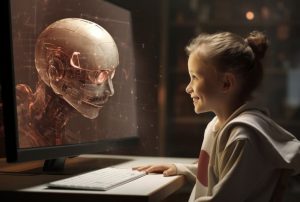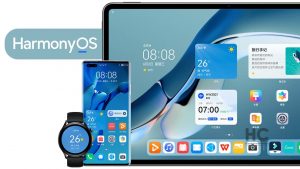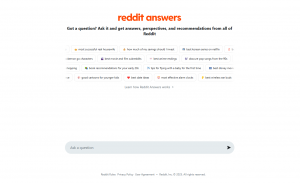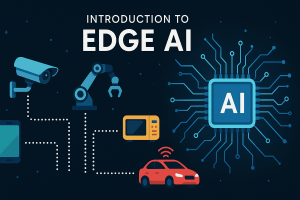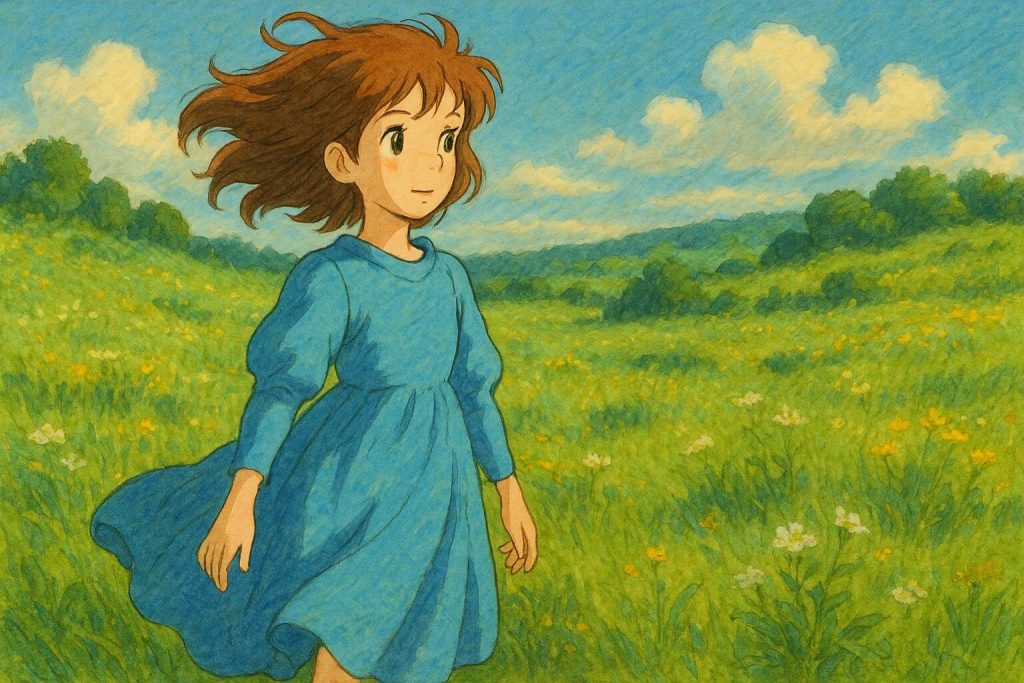 A girl in a blue dress in Studio Ghibli style.
A girl in a blue dress in Studio Ghibli style.
Unleashing the Magic of AI in Studio Ghibli-Style Creations
Studio Ghibli has captivated audiences worldwide with its enchanting animations and distinct artistic style. But what if you could harness the power of artificial intelligence to create your own Ghibli-inspired masterpieces? In this comprehensive guide, we’ll explore how to make AI art that captures the essence of Studio Ghibli’s magical worlds, leveraging cutting-edge AI technologies and techniques.
Understanding AI Art Generation: The Foundation of Digital Creativity
Before we dive into the creation process, it’s essential to understand what AI art is and how it works. AI-generated art relies on sophisticated algorithms and neural networks to produce visual compositions. These AI models have been trained on vast datasets of images, including anime and Studio Ghibli films, allowing them to learn and reproduce various artistic styles.
The recent advancements in AI technology, such as those seen in Gemma AI and Qwen AI, have pushed the boundaries of what’s possible in AI-generated art. These models demonstrate increased efficiency and accessibility, making it easier for artists and enthusiasts to create stunning visuals with AI assistance.
7 Steps to Create Studio Ghibli-Inspired AI Art
- Choose the Right AI Art Generator
Selecting the appropriate AI art generator is crucial for achieving Ghibli-like results. While popular options like Midjourney, Stable Diffusion, and DALL-E 2 are well-known, new contenders are constantly emerging. For instance, Kimi AI has made significant strides in multimodal AI, which could potentially offer more nuanced control over artistic styles. - Craft Your Prompt
The key to achieving Ghibli-like results lies in your prompt. Be specific about Ghibli’s signature elements:- Lush, natural landscapes
- Whimsical characters
- Soft, pastel color palettes
- Magical creatures or spirits
- Example prompt: “A serene forest scene with a young girl riding a giant, fluffy white creature, in the style of Studio Ghibli, soft pastel colors, magical atmosphere, detailed foliage, and a distant floating castle in the sky”
- Experiment with Style Transfer
Some AI tools allow you to upload reference images. Try uploading stills from Ghibli films to guide the AI’s style. This technique, known as neural style transfer, can help achieve more authentic results. As AI models like GPT-4.5 continue to evolve, we can expect even more sophisticated style transfer capabilities in the future. - Refine and Iterate
Don’t be afraid to experiment and refine your prompts. Each iteration can bring you closer to that perfect Ghibli-esque creation. Pay attention to the following aspects:- Color palette: Adjust your prompts to match Ghibli’s signature soft, pastel hues
- Lighting: Experiment with different lighting conditions to capture the magical atmosphere
- Character design: Focus on creating expressive, endearing characters reminiscent of Ghibli’s style
- Environmental details: Include elements like wind-swept grass, fluffy clouds, or intricate architectural details
- Incorporate Narrative Elements
Studio Ghibli films are known for their rich storytelling. Try to infuse your AI-generated art with narrative elements:- Create a series of images that tell a story
- Include symbolic objects or creatures that hint at a larger narrative
- Experiment with different perspectives to create a sense of scale and wonder
- Post-Processing
While AI can do much of the heavy lifting, adding your personal touch through post-processing can elevate the final result. Use photo editing software to:- Adjust colors and contrast
- Add subtle textures
- Enhance the magical atmosphere with effects like glows or particles
- Refine details that the AI might have missed
- Collaborate with AI
As we’ve seen with advancements like Manus AI, AI systems are becoming increasingly autonomous. While full autonomy in art creation is still a way off, you can leverage AI as a collaborative tool. Use AI-generated elements as a starting point, then add your own artistic flair to create truly unique pieces.
Advanced Techniques for Studio Ghibli-Inspired AI Art
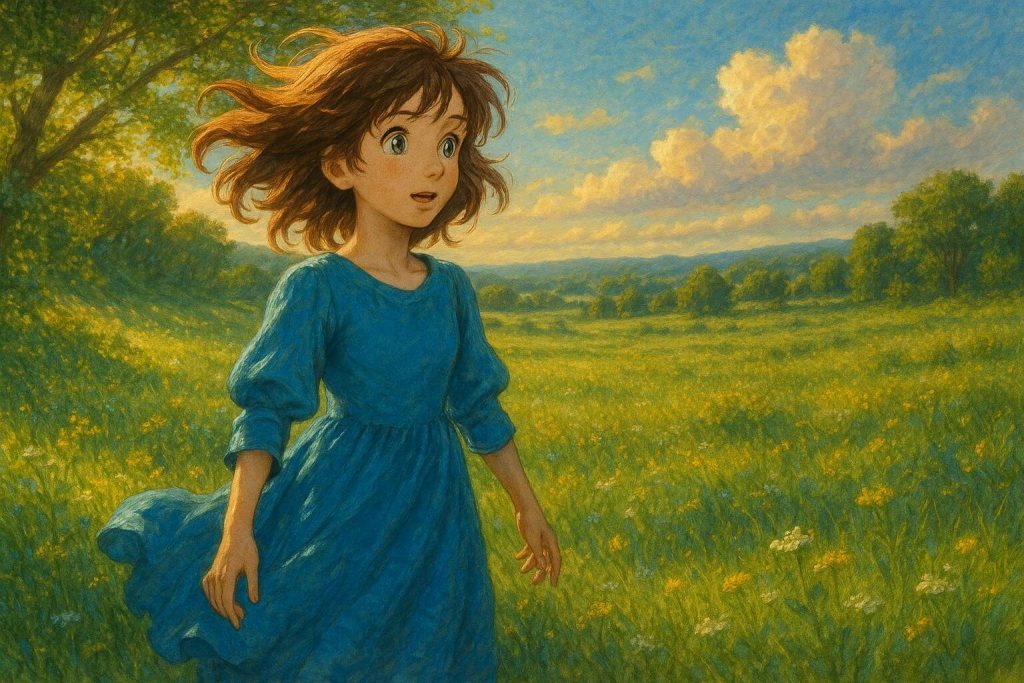 A girl in a blue dress in custom Studio Ghibli style.
A girl in a blue dress in custom Studio Ghibli style.
As you become more comfortable with basic AI art generation, consider exploring these advanced techniques to take your Ghibli-inspired creations to the next level:
- Layered Prompts
Instead of creating an entire scene with a single prompt, try building your image in layers. For example:- Layer 1: “A misty forest background in Studio Ghibli style”
- Layer 2: “A young girl with red hair and a blue dress in Ghibli style”
- Layer 3: “A large, fluffy white spirit creature”
- By combining these layers in post-processing, you can achieve more control over the composition.
- Animation Techniques
While most AI art generators focus on static images, you can create a sense of motion by generating a series of slightly different images and combining them into a gif or video. This can help capture the dynamic feel of Studio Ghibli’s animations. - 3D Integration
Some AI tools are beginning to incorporate 3D elements. Experiment with generating 3D models of Ghibli-inspired characters or environments, which can then be rendered or used as references for 2D art. - Voice-to-Image Generation
As natural language processing advances, some AI tools are exploring voice-to-image generation. This could allow you to describe your Ghibli-inspired scene verbally, potentially capturing more nuance in your prompts.
The Role of Multimodal AI in Studio Ghibli-Style Art Creation
The development of multimodal AI, as seen in Kimi AI’s k1.5 model, opens up exciting possibilities for Studio Ghibli-inspired art creation. These models can process and generate content across multiple modalities, such as text, images, and even audio.
For Ghibli-style art, this could mean:
- Generating images based on textual descriptions of scenes from Ghibli films
- Creating background music that matches the mood of the generated artwork
- Producing short animated sequences that capture the essence of Ghibli’s style
As these multimodal systems continue to evolve, we can expect even more immersive and comprehensive Ghibli-inspired creations.
Ethical Considerations in AI Art Creation
As we explore the possibilities of AI-generated art, it’s crucial to consider the ethical implications. The use of AI in art raises questions about authorship, originality, and the value of human creativity. Here are some key considerations:
- Attribution and Transparency
When sharing your AI-generated Ghibli-inspired art, be transparent about the role of AI in the creation process. This honesty helps maintain trust in the artistic community and acknowledges the collaborative nature of AI-assisted art. - Copyright and Fair Use
While AI can generate Ghibli-style art, it’s important to respect copyright laws. Use your AI-generated art as inspiration or for personal projects, but be cautious about commercial use that might infringe on Studio Ghibli’s intellectual property. - Preserving Human Creativity
As AI becomes more advanced, there’s a concern about the potential loss of human artistic skills. Strive to use AI as a tool to enhance your creativity rather than replace it entirely. - Bias in AI Models
Be aware that AI models can perpetuate biases present in their training data. When creating Ghibli-inspired art, be mindful of representation and diversity in your creations.
The Future of AI in Anime-Style Art Creation
The rapid advancements in AI technology promise an exciting future for anime and Ghibli-style art creation. As models like GPT-4.5 and Grok 3 continue to evolve, we can expect:
- More Precise Style Replication
Future AI models may be able to capture the nuances of specific Studio Ghibli films or even individual artists’ styles with greater accuracy. - Interactive Art Creation
Advancements in agentic AI could lead to more interactive art creation processes, where the AI can take more initiative in the creative process based on high-level directions from the artist. - Real-Time Collaboration
AI models might evolve to provide real-time feedback and suggestions during the art creation process, functioning more like a collaborative partner than a tool. - VR and AR Integration
The combination of AI-generated art with virtual and augmented reality technologies could allow for immersive Ghibli-inspired experiences.
Embracing the Future of Art with AI
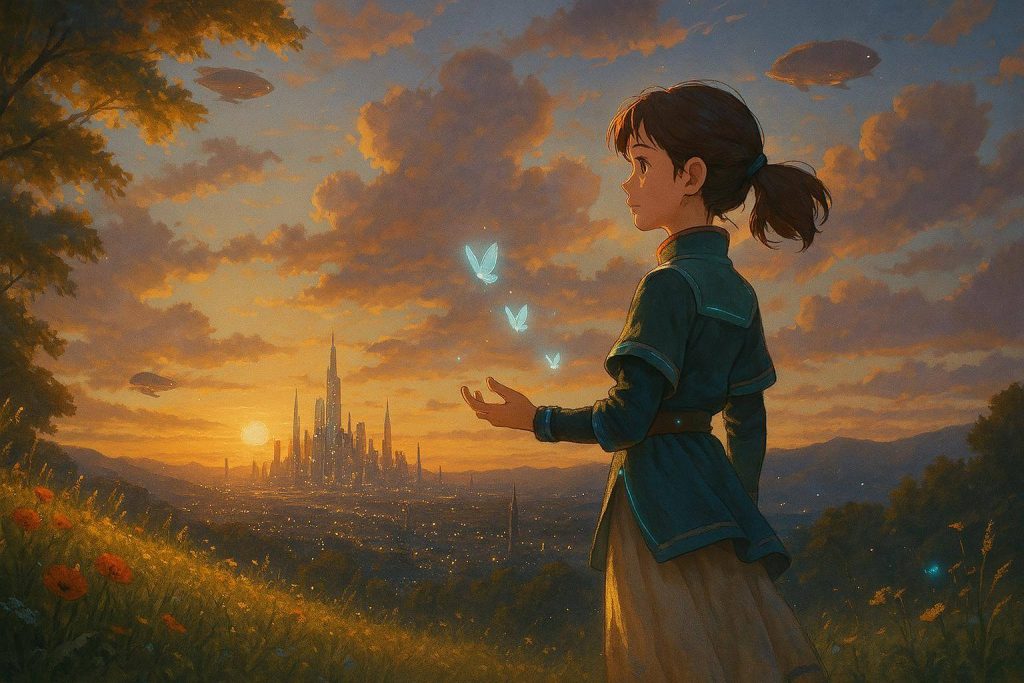
A girl looks to the future in Studio Ghibli style.
The intersection of Studio Ghibli’s timeless charm and cutting-edge AI technology opens up exciting possibilities for artists and enthusiasts alike. As AI continues to evolve, we can expect even more impressive results, pushing the boundaries of digital creativity.
By following these steps and experimenting with different prompts and techniques, you can create stunning Studio Ghibli-inspired artworks that capture the magic and wonder of these beloved animations. Remember, while AI is a powerful tool, it’s your creativity and vision that truly bring these digital creations to life.
Ready to Start Your AI Art Journey?
Are you inspired to create your own Studio Ghibli-esque masterpieces using AI? As you embark on this exciting journey, keep in mind that the field of AI is rapidly evolving. Stay updated with the latest advancements by exploring our articles on cutting-edge AI models like Claude Sonnet 3.7 and DeepSeek.
Share your creations and experiences in the comments below, and don’t forget to check out our other articles on AI advancements to stay at the forefront of this exciting field. Happy creating!
Want to learn more? Read the complete guide to AI Art and Image Generators.

